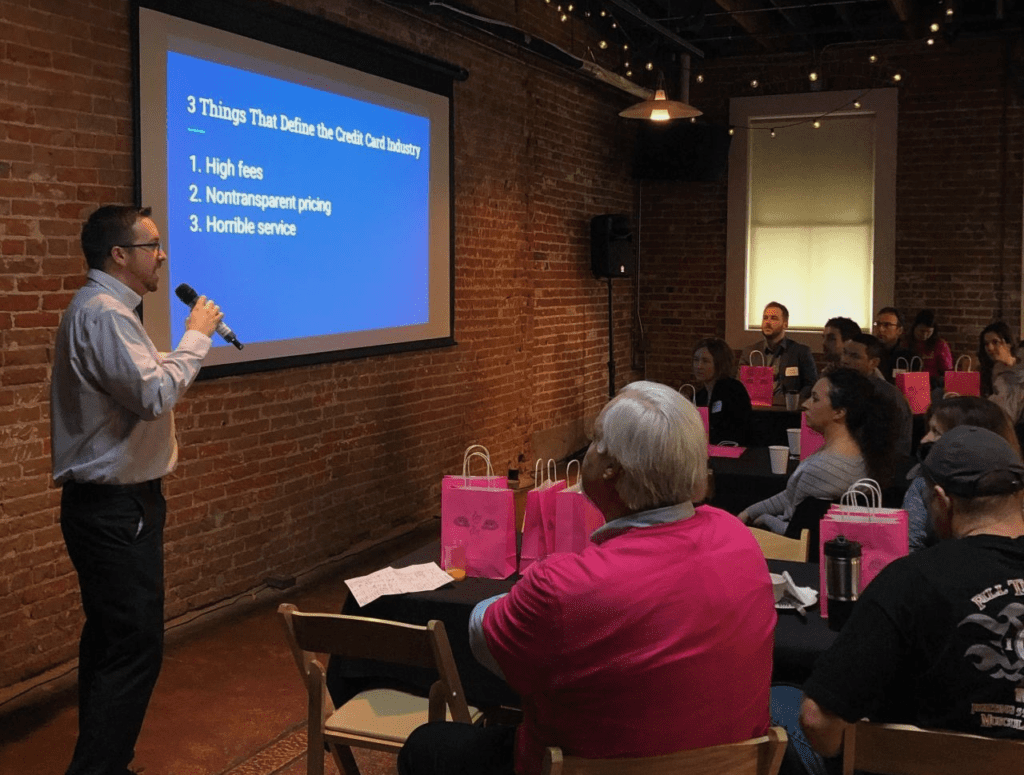You’ll Never Become a Strong Communicator If You Can’t Overcome Your Expertise

“Once you know something, it’s hard to imagine not knowing it. And that, in turn, makes it harder for you to communicate clearly to a novice.” -Chip and Dan Heath
The curse of knowledge is the bane of every leader, teacher, salesperson, subject matter expert, public speaker, and writer.
It’s the idea that all of us forget what it was like to first learn something. As our knowledge grows and we become more familiar with the nuances of a topic, it becomes harder to communicate the concept simply.
If you’re an Excel wizard, it’s tough to explain spreadsheet basics to a newbie. If you’re a professional musician, you may struggle to know where to begin when teaching a 10-year-old how to play guitar.
With knowledge comes distance — distance from our beginner's brain.
This is the reason why I often like to pair new employees with low-tenured employees during onboarding. It’s tempting to assign experienced subject matter experts to teach new hires, but experts often dive into the deep end too quickly.
Writer and theologian C. S. Lewis (author of The Chronicles of Narnia) understood this concept well when he said, “The fellow pupil can help more than the master because he knows less. The difficulty we want him to explain is one he has recently met. The expert met it so long ago he has forgotten.”
But thankfully, even though slaying the curse of knowledge is difficult, it is certainly not impossible. Here are five tips for communicating complex concepts:
1. Use analogies.
“Analogies work because they make the unfamiliar familiar; they help the mind navigate new terrain by making it resemble terrain we already know.” -John Pollack
Do you know what a pomelo is?
Chip and Dan Heath pose this question in their book Made to Stick. I didn’t know anything about pomelos when I read the book, and for the purpose of this exercise, let’s say you don’t either.
The Heath Brothers offer two different ways a person could describe a pomelo:
Option 1: “A pomelo is the largest citrus fruit. The rind is very thick but soft and easy to peel away. The resulting fruit has a light yellow to coral pink flesh and can vary from juicy to slightly dry and from seductively spicy-sweet to tangy and tart.”
Option 2: “A pomelo is basically a supersized grapefruit with a very thick and soft rind.”
Although Option 1 is more robust, Option 2 is easier to grasp because it associates pomelos with something we already understand: grapefruit.
By comparing unknown things to known things, we can help others slowly step to understanding. Use analogies whenever possible to explain topics in terms your audience will understand.
2. Slice difficult concepts into manageable chunks.
“To strip an idea down to its core, we must be masters of exclusion. We must relentlessly prioritize.” - Chip and Dan Heath
My wife and I recently visited Hawaii. Our hotel offered a class on how to play the ukelele, and even though I’m not a musical person, I was excited to take the class and learn a few things.
The instructor was internationally-renowned ukelele player Derick Sebastian, who has performed before audiences like the Los Angeles Lakers, TEDx, and the Disney PIXAR Animation Studio. He’s played the ukelele for over 25 years.
Derick’s audience for our specific class was a group of a half-dozen newbies in flip flops who had never picked up a ukelele.
So Derick started the lesson out simply. He didn’t start by explaining any chords. He spent the first five minutes showing us how to strum. That’s it — just strumming the ukelele. Then he showed us a simple strum pattern that is the foundation of hundreds of songs.
His amateur audience left with a solid understanding of ukelele basics while not feeling overwhelmed. He shrunk a complex topic (learning a new instrument) into a manageable dose of information that we could absorb in a 30-minute introductory lesson.
Derick is a great example of someone who has learned how to slay the curse of knowledge that comes with his success.
Follow Derick’s example: break complex ideas down into smaller chunks. The goal is to start in the shallow end of the pool, then gradually lead the other person into the deep end.

3. Refuse to use jargon.
“It is all very well for you to write simply and the simpler the better. But do not start to think so damned simply. Know how complicated it is and then state it simply.” -Ernest Hemingway
One of my favorite questions to ask job candidates in interviews is, “Explain [X concept] to me as if I was a 10-year-old.”
For years, I’ve used this question to learn whether someone can eliminate all of the business jargon and speak like a human. I don’t want to hear about “streamlining processes,” “maximizing efficiency,” or “driving revenue growth.” I want to hear a real person describe what they did in simple terminology. If they can do that, they prove their competence and confidence.
Use simple words to communicate complex ideas. Avoid industry jargon, undefined acronyms, and unexplained assumptions. Speak like a human and use basic terminology to connect with your audience.
4. Start at 30,000 feet, then divebomb closer.
“Your mission in any presentation is to inform, educate, and inspire. You can only inspire when you give people a new way of looking at the world in which they live.” -Robert Ballard
Several years ago I gave a talk on how to become an effective public speaker. In addition to being the most meta presentation I’ve ever given, the talk was also one of the most nerve-wracking to present because I could imagine no worse presentation to botch.
I wanted to provide the audience with a memorable framework, so I chose the “SUCCESS” formula from Made to Stick, which states that people remember content that is Simple, Unexpected, Concrete, Credible, Emotional, and Story-based. (Yes, there’s an “s” missing in SUCCESS.)
I realized as I prepared the talk that the framework would be useless without stories and practical examples. So I included one story for each element of the formula, and at the end of the talk, I also invited audience members to share their own stories that connected to the SUCCESS formula. The fusion of framework plus stories made the lesson stick.
Frameworks without examples lead to superficial lessons. Listeners learn a fascinating theory at a 30,000-foot level but never learn what to do with it. The information doesn’t impact them because they haven’t internalized it.
Examples without frameworks lead to unstructured lessons that lack purpose and direction. Attendees leave with fresh ideas at a bird’s-eye view, but no overall framework to connect them and remember them. The information is quickly forgotten.
To slay the curse of knowledge and help others understand a new topic, you must fly at multiple altitudes. You must offer a 30,000-foot framework while also providing bird’s-eye view examples. Present an overarching concept, then make it practical. Zoom out, then zoom in.
5. Check for understanding.
“The single biggest problem with communication is the illusion that it has taken place.” -George Bernard Shaw
Two massive forces prevent communicators from knowing whether their message has sunk in:
- It’s easy to convince ourselves that we’re awesome and our message was well-crafted. (And unfortunately, we’re often wrong.)
- Many learners tend to fake understanding. They don’t want to feel dumb, so they nod their heads and play along.
Both of these reasons mean it’s easy to convince yourself that your message has gotten through — even if it hasn’t. The only way to truly know whether you’ve successfully slain the curse of knowledge is to ask your audience.
While you’re speaking, read non-verbal cues. Do you see confused expressions on people’s faces? Is the audience beginning to tune out? Have you been talking for a long time without letting others share their comments and questions?
When you finish sharing a key point, ask questions to gauge understanding. Determine what parts people are still trying to grasp. Encourage open participation — the more engagement, the better.
The curse of knowledge is a formidable foe. As you grow in knowledge, it grows in size. Practice the five tips above to improve your communication skills and ensure you’re communicating complex ideas simply.
Want to become a stronger leader?
Sign up to get my exclusive
10-page guide for leaders and learners.



